A person-focused preventative approach to community health
We advocate for a focus on individuals and not illnesses, with a shift from a treatment-based approach to proactive healthcare in a neighbourhood setting.
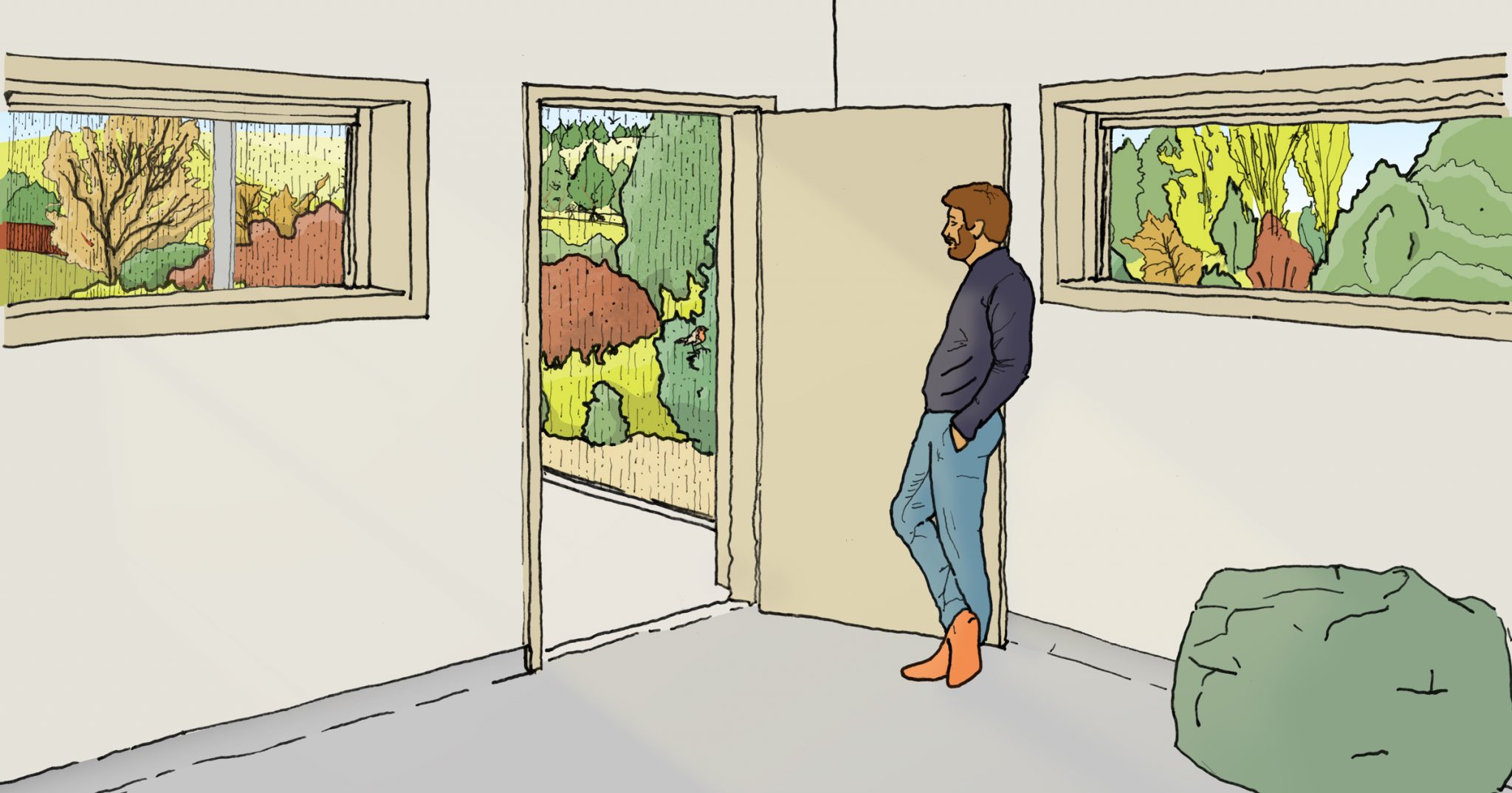
Before I delve into our recent experience in the design of standardised safety suites, I think it is important to clarify something first. It is clear from my conversations with mental health professionals that seclusion, even when done properly, can be a distressing experience for the service user, and as such, should be avoided with every opportunity. However, there is also recognition that there are instances where no other alternative exists. Our mission has been to focus on these situations and to seek to improve the patient experience in every way possible.
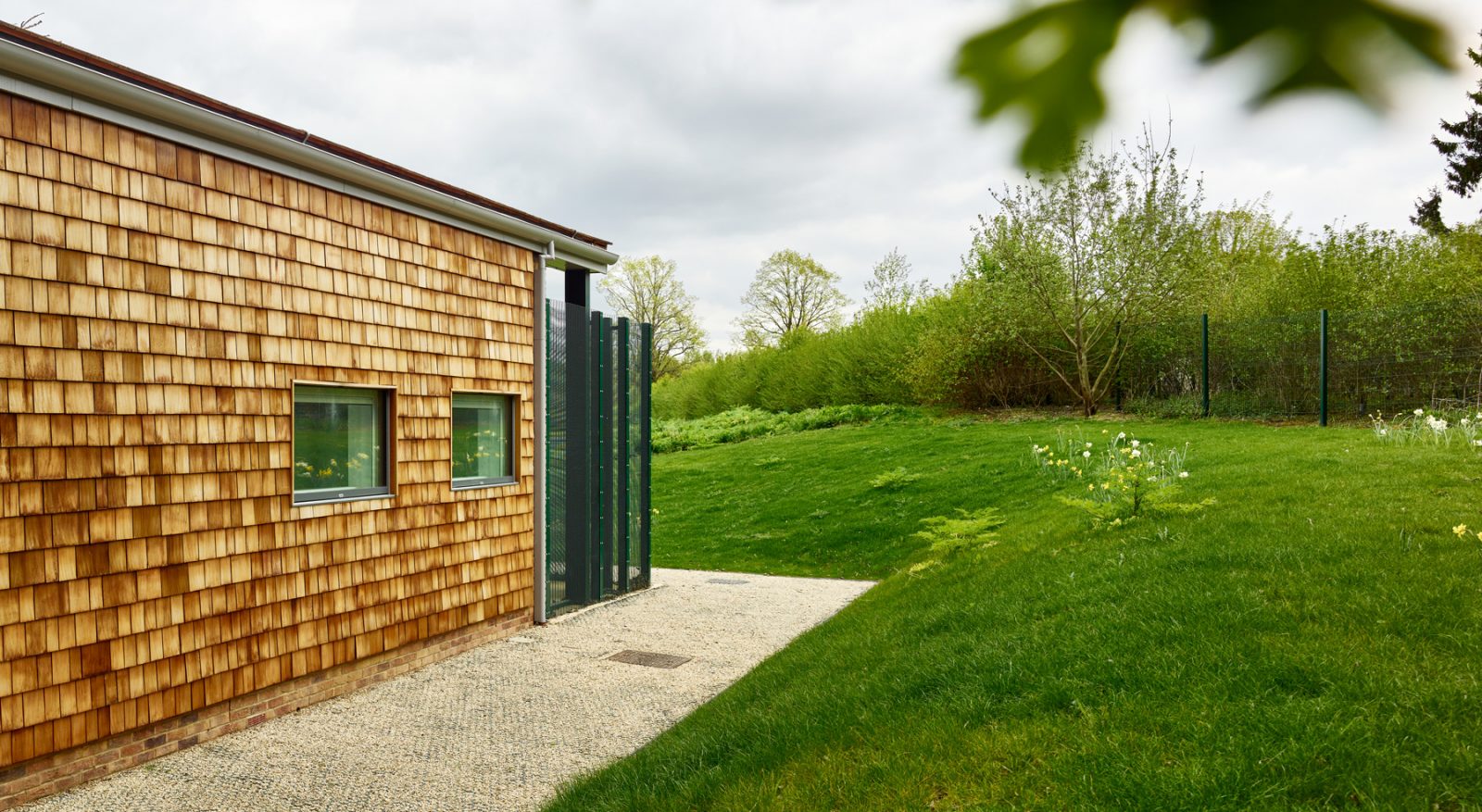
Views to nature is an important aspect of our standardised design for safety suites for Hertfordshire Partnership University NHS Foundation Trust.
In mental health, seclusion environments are somewhat of a taboo topic that tend to be kept out of the spotlight in favour of other spaces such as the patient bedroom, day spaces or gardens. This is evidenced in the way seclusion spaces are presented in existing facilities. Firstly, seclusion rooms are regularly placed in an obscure part of the ward, in small dark rooms with a periscope-sized window up high in a corner, often with the toilet placed in the same space. Secondly, instead of having a dedicated adjoining room for observation, the task is carried out by a member of staff standing in the corridor and peering through the door’s vision panel. Such arrangements create multiple blind spots and can lead to an excessive number of CCTV cameras to monitor the patient from every angle. Finally, inappropriate building components, materials and details often make the building vulnerable to damage and expose the patient to self-harm.
Within such environments, the patient’s journey through seclusion can be problematic. As their episode starts, they may be paraded through the ward’s corridors, undermining their dignity, creating distress to other patients, and potentially hurting themselves or the staff escorting them. Once they are in the seclusion room, its size, lack of light, views and access to outdoor space can create a pressure cooker effect, making them feel incarcerated. If that was not enough, there is the indignity of having to use the toilet in the same space used for sleeping, all with the potential for being watched through the vision panel by passers-by. No wonder that the environment can have a negative impact on the patient’s recovery process.
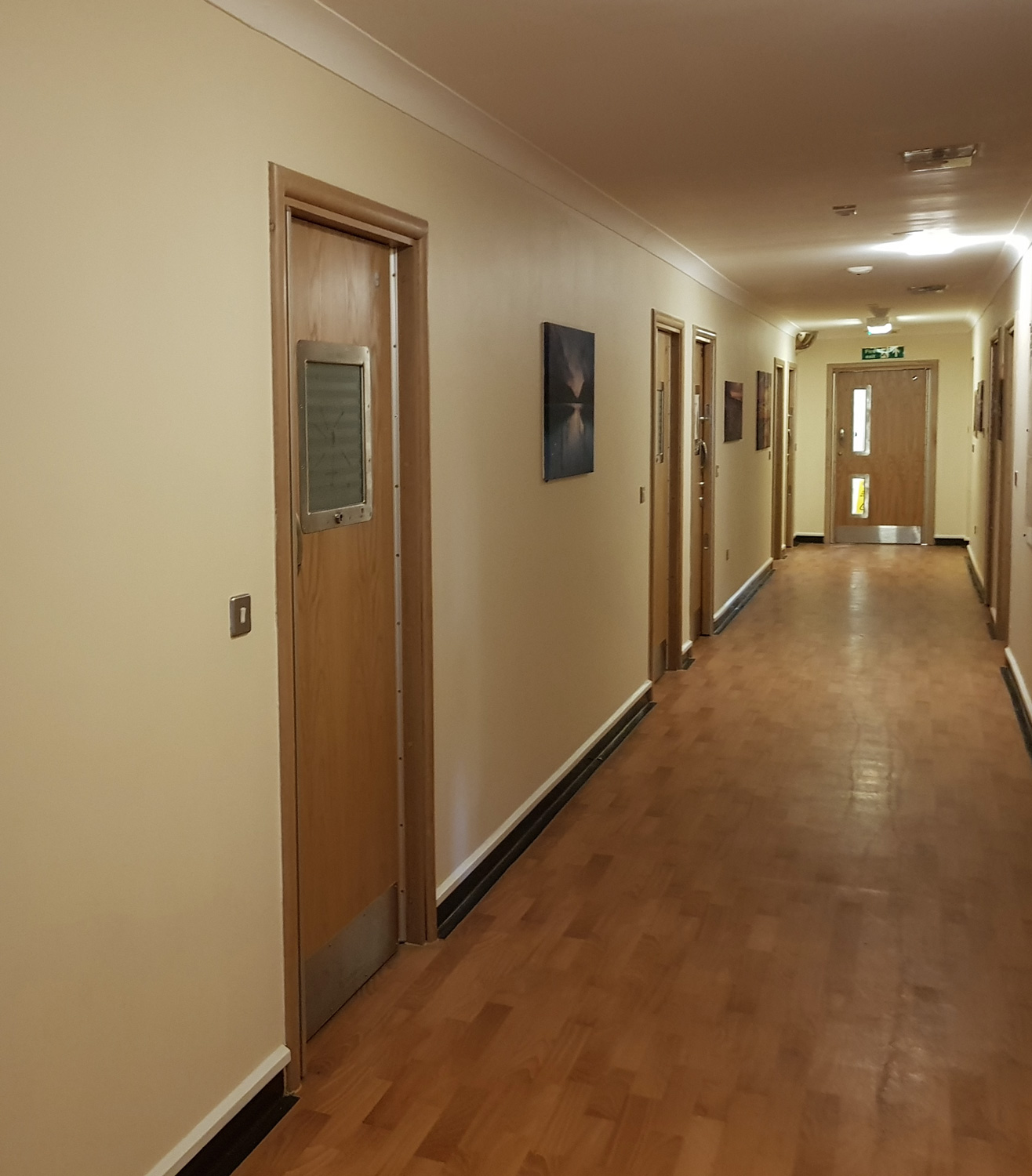
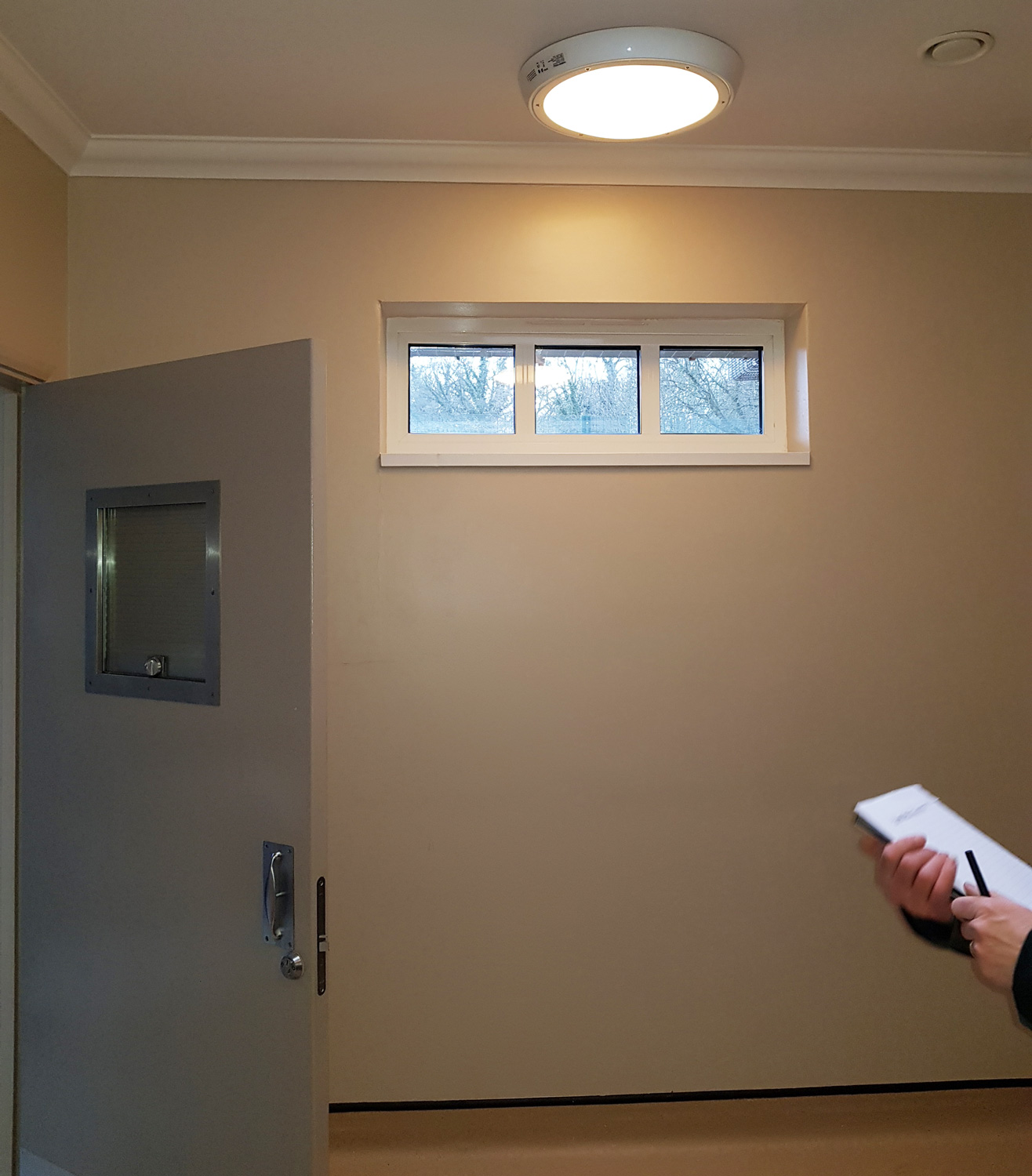
BEFORE: Visits to existing seclusion facilities and feedback collected from staff and service users identified a range of common issues with existing spaces, including privacy within the ward and access to daylight and outside views.
We were commissioned by Hertfordshire Partnership University NHS Foundation Trust to develop a standard design for their seclusion facilities. They were of varying design quality and suffered frequent damage, often disrupting the provision of services and leading to service users being relocated away from their family and support network. The Trust wanted to define a higher standard that would reflect the quality of care that they offer as an organisation, going above and beyond the current industry standards and guidance.
At the initial design stage, we assembled a matrix of best-in-class building components, and a flexible prototype design which could be adapted to the needs of individual sites. This prototype was constructed and then physically tested with clinical and estates teams across a range of the Trust’s mental health services, including low secure, medium secure, psychiatric intensive care, and learning disabilities. The teams discussed the seclusion pathway in detail and tested the matrix of components through physical samples brought into a series of specially devised stakeholder workshops, with input from Blu Building Consultants, allowing the prototype to be refined into a developed standard.
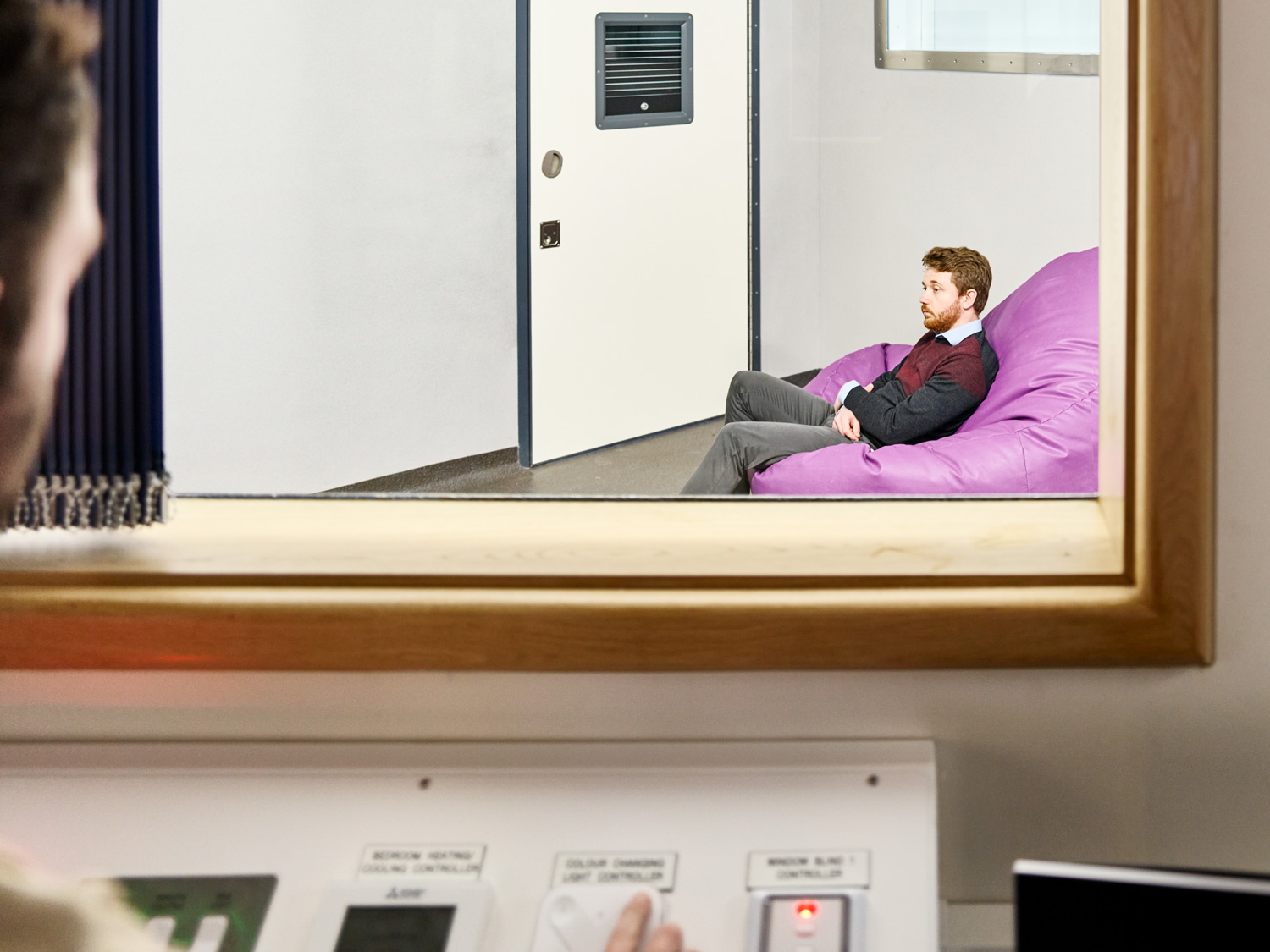
In the standardised design, each observation room is located between a pair of safety suites, providing clear views into each.
The safety suites provide a calming environment for service users.
This developed standard was then deployed across six sites, created as extensions of the existing facilities. For each, the standard design was adapted to meet the individual requirements in terms of programme, layout, building geometries and materials. This enabled each to be shaped to reflect its specific clinical requirements and surrounding context, whilst ensuring the same high level of quality throughout, informed by further engagement with the local clinical teams and service users. To date, three out of the six units have been completed and are in use.
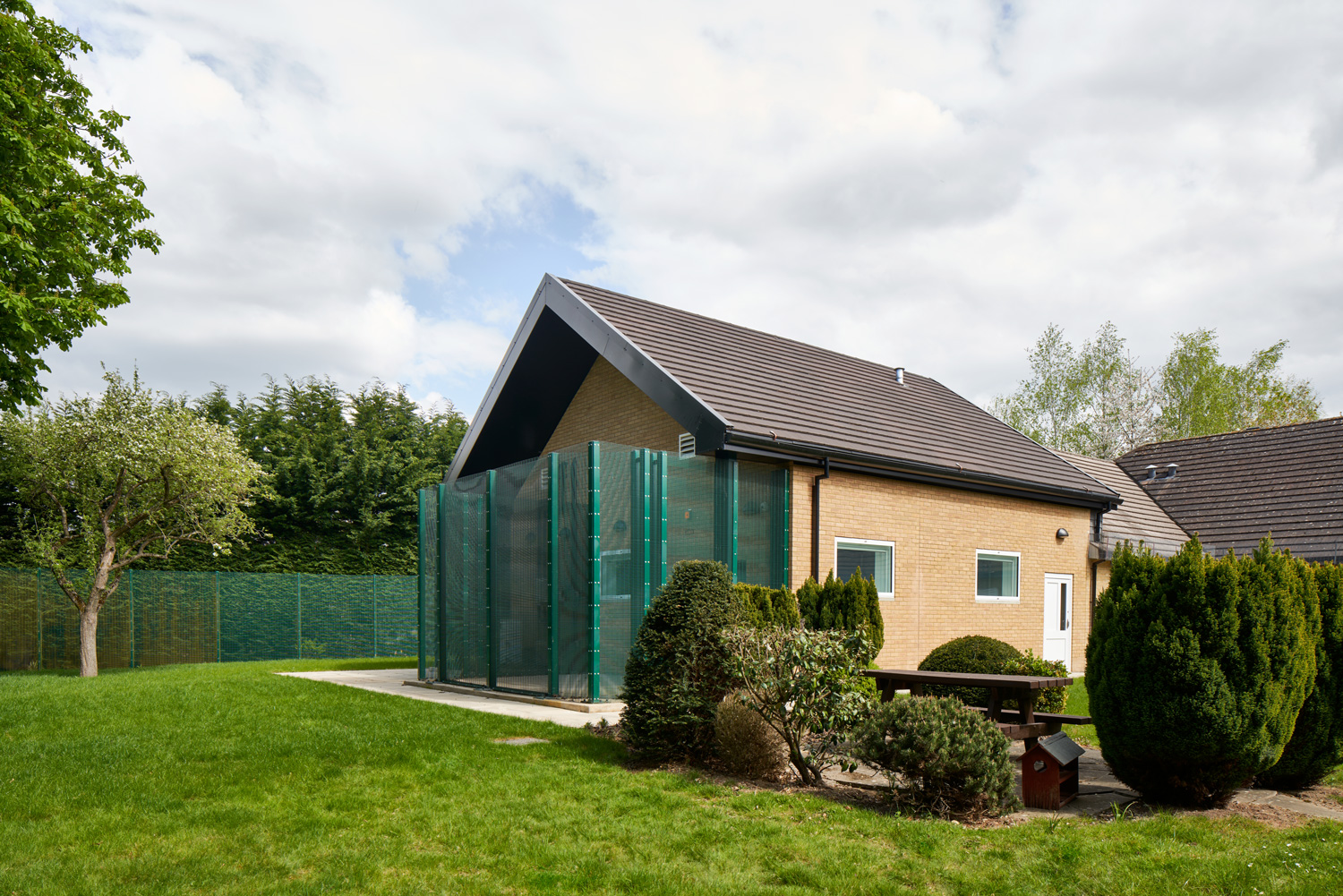
Low Secure Unit - Bowlers Green.
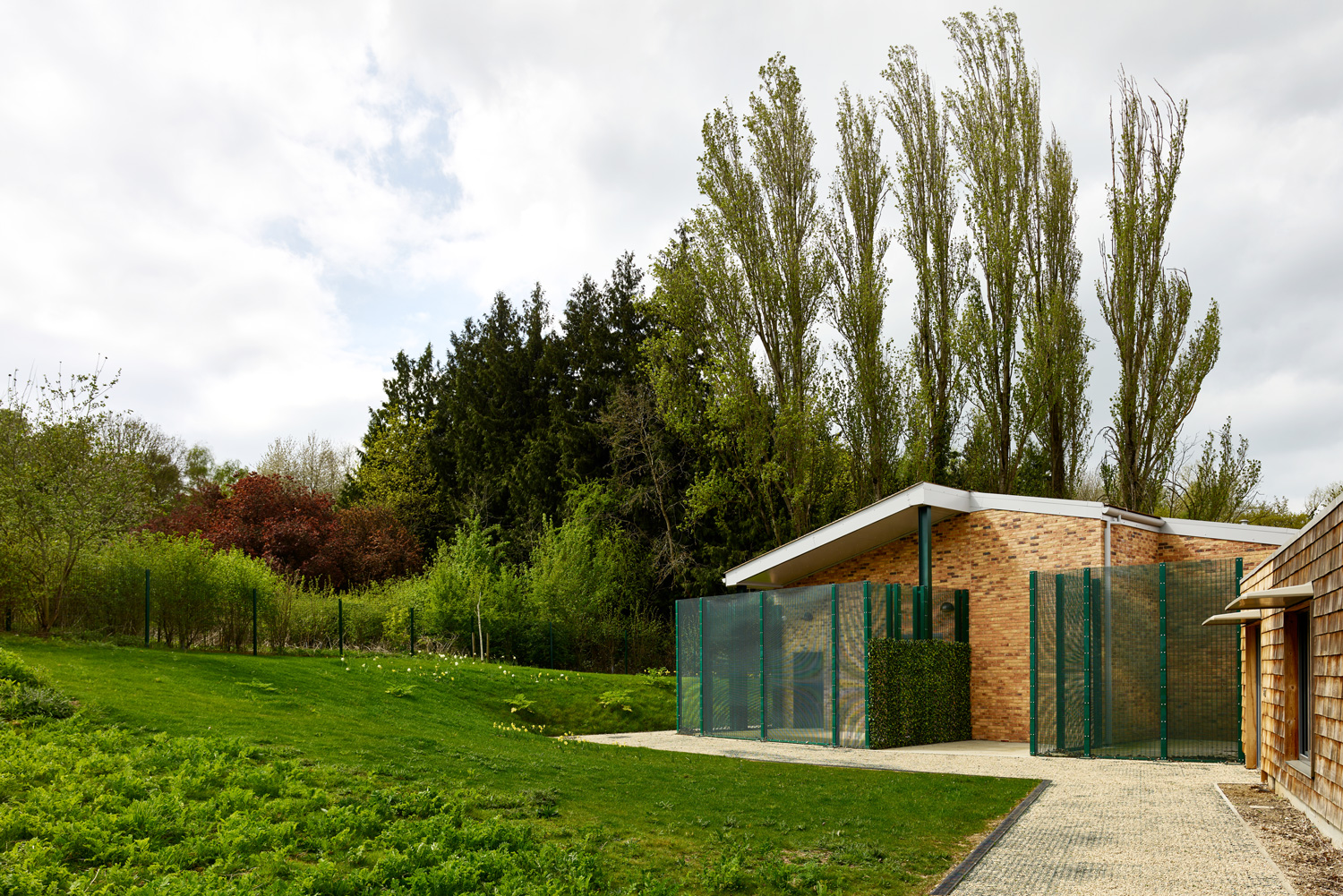
Learning Disabilities Ward - Kingfisher Court, Dove Ward.
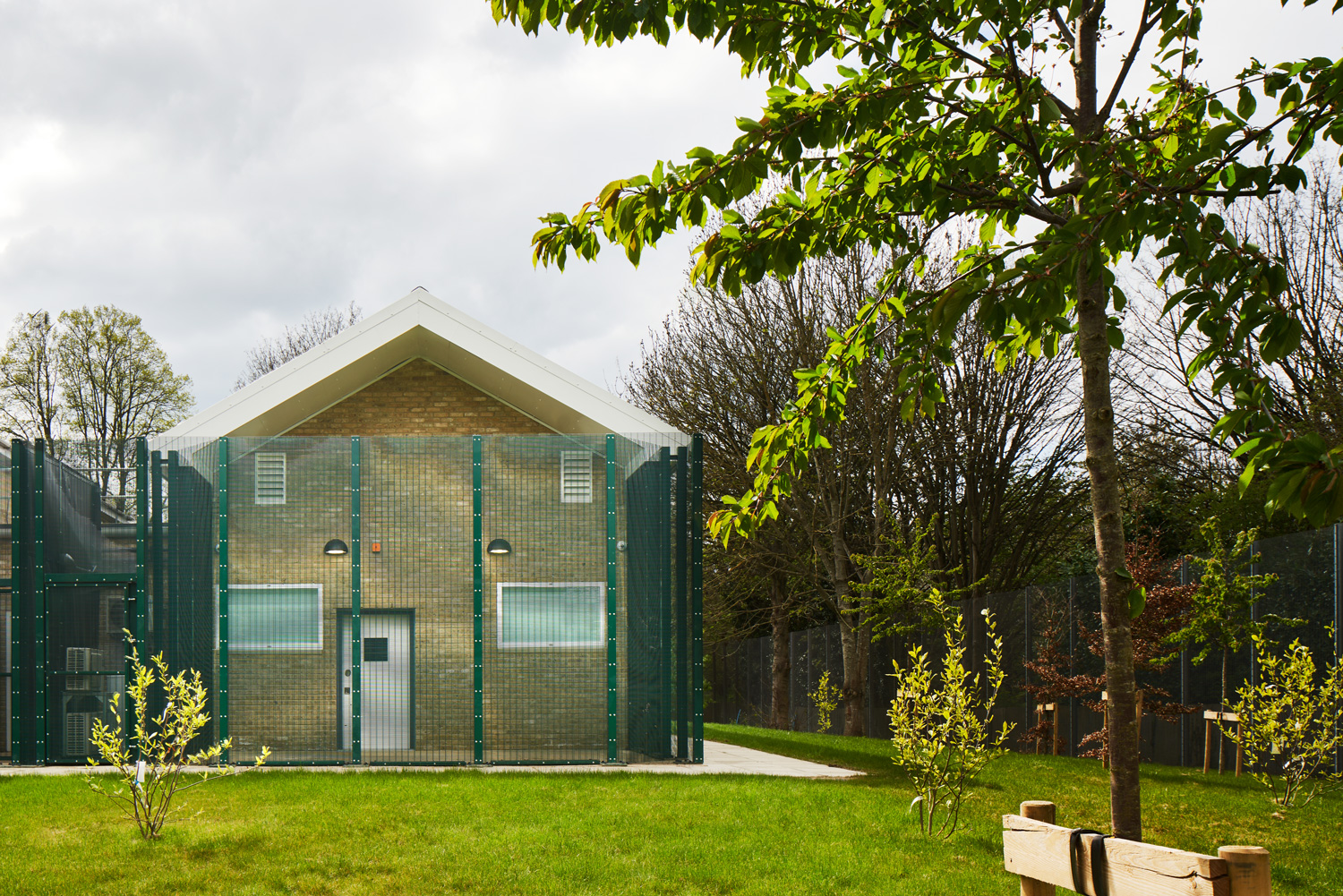
Medium Secure Unit - Warren Court.
The standard safety suite is designed as a pair of seclusion rooms that wrap around a central observation space. The L-shaped rooms form a large open space with clear separation of function, allowing toilets to be concealed to create a more comfortable and dignified experience for the service user. The observation room is located between the two rooms, allowing direct observation of all areas and increased staff resilience; having both members of staff in the same space when both rooms are in use provides opportunities to react faster and in greater safety to incidents as they arise.
The suite is intentionally placed outside the ward, and this is done for three reasons. Firstly, this arrangement provides a secure access lobby with a wider area to manoeuvre the service user into the room. Secondly, distance from the ward creates privacy for the service user. And finally, this configuration allows external secondary access into the suite, should it be required.
The rooms are much larger there is much more space for everybody, service users and staff, when they are supporting the person.
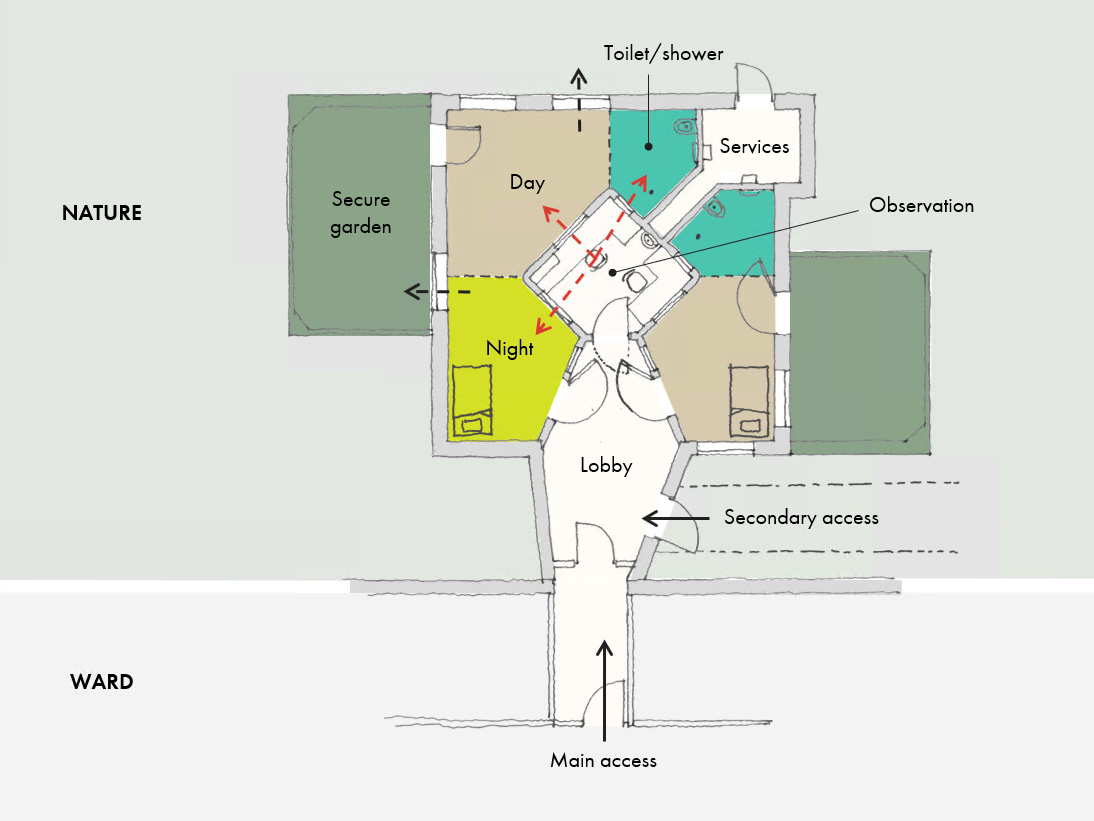
The standard safety suite layout in which a pair of seclusion rooms surround a central observation space.
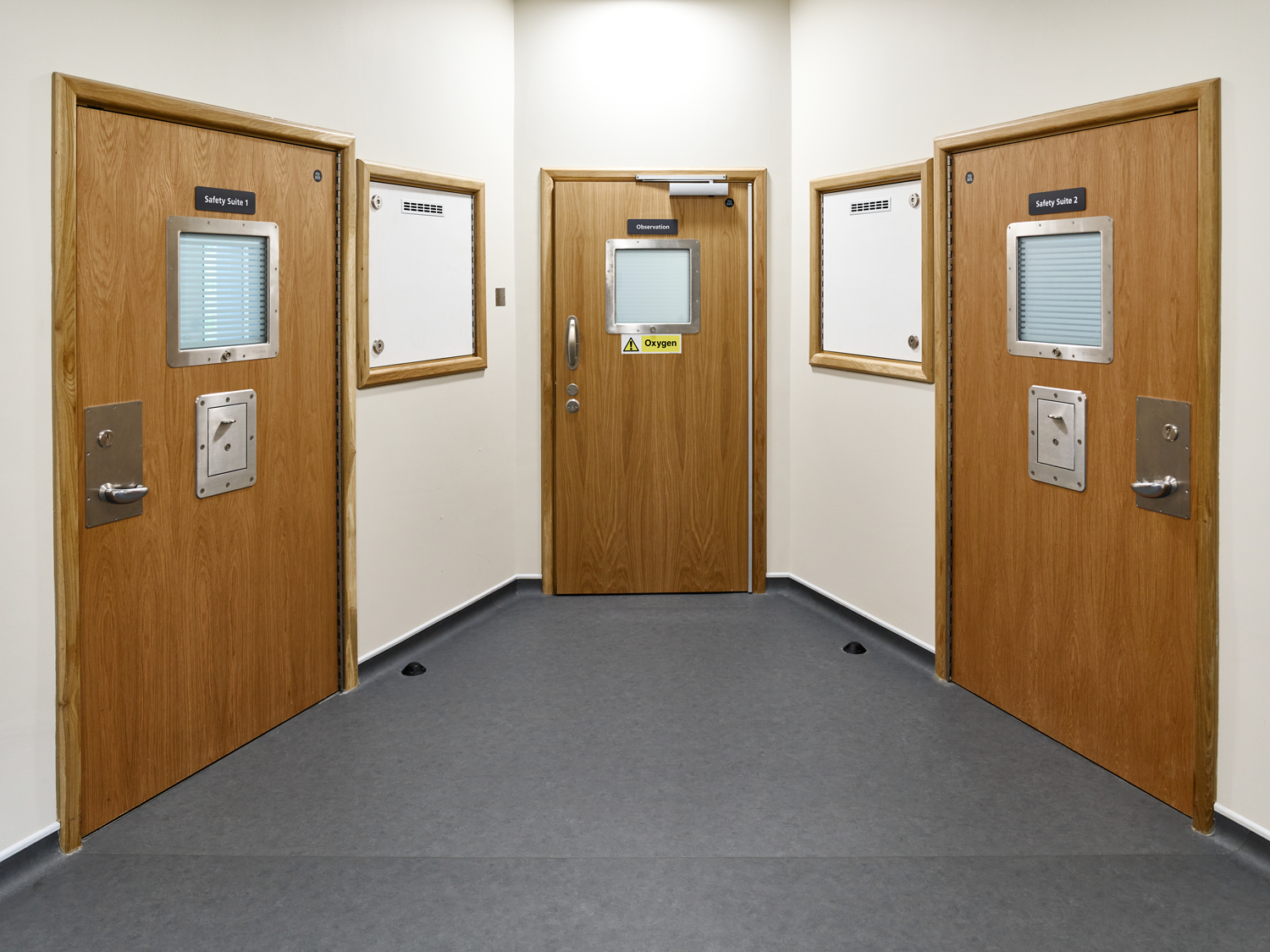
The suites are placed outside the ward, affording additional privacy.
The room interior can be configured to suit the service user’s individual needs. For example, automatic blinds can regulate the amount of daylight; ceiling lights can project any kind of colour; a combination of underfloor heating, where service users can often be barefoot, along with ceiling heating allows better control of the room temperature; ceiling speakers can project music; and a digital screen can provide images or videos on request.
Perhaps the most innovative aspect of the safety suite is the relation to nature. There is a well-established evidence base that views towards nature and access to natural spaces have therapeutic benefits for patients. To this end, the safety suite provides eye level views towards the surrounding natural landscape through large secure windows. Additionally, it also offers access to an external secure garden. Access to the garden is managed by members of staff and gives service users the opportunity to experience the outdoors through a greater range of senses, whilst in seclusion.
The lighting, the television, the heating systems, have all meant that the environment is a much better place to be.

An integral entertainment unit is included within the seclusion space with audio/visual control.
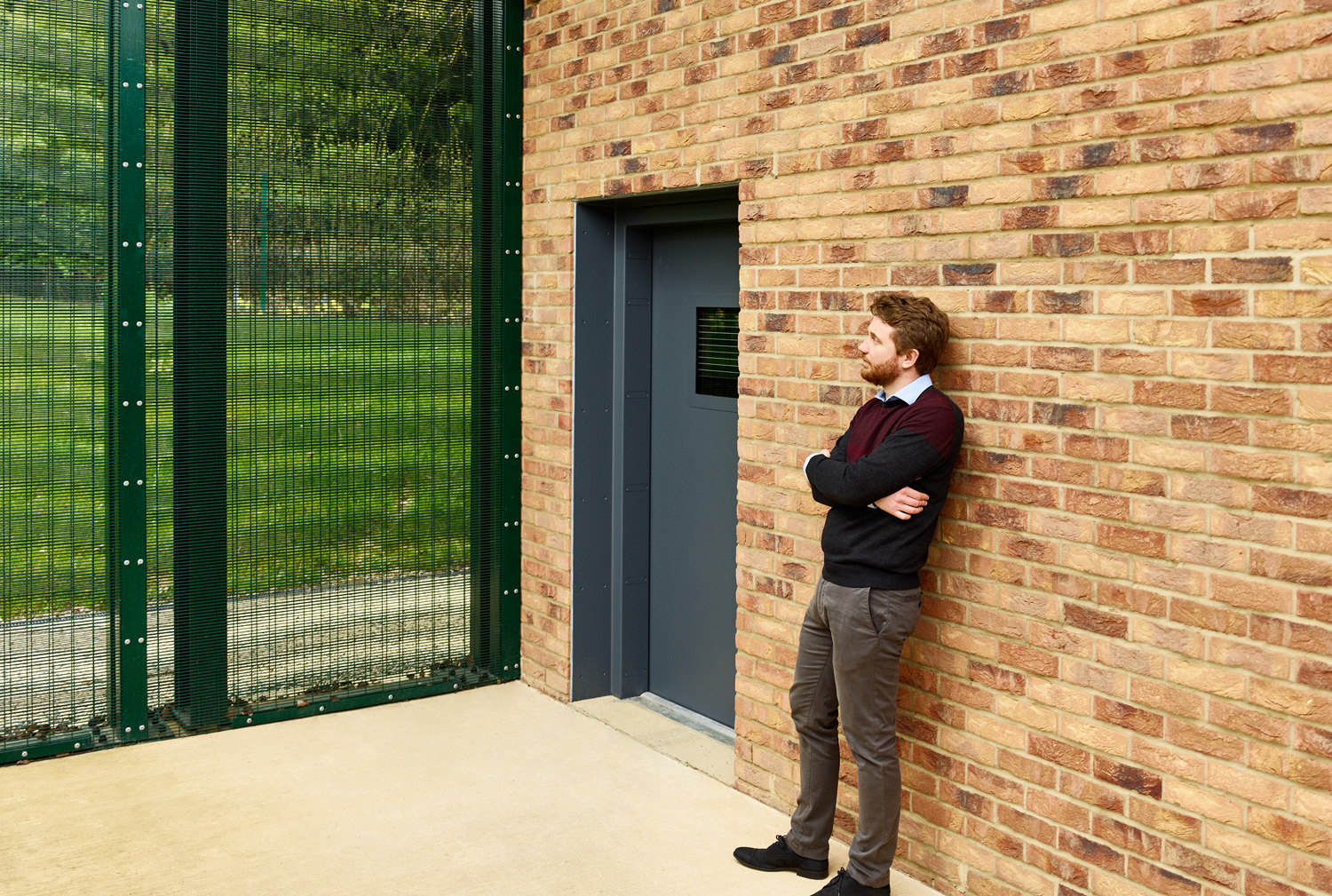
The safety suites allow controlled access to outdoor space.
Standardisation of the safety suite design offers a series of benefits that directly affect individual service users. An extremely robust construction has been concealed behind seamless detailing, affording a calming appearance to an otherwise tough and damage-resistant space. The generous amount of daylight, together with the suites’ spaciousness and access to outdoor space, help to create a calming environment.
Designed to be highly configurable, the safety suite offers some level of control back to the service user who can play their own music, change the lighting, watch videos or images that calm them, speak with members of their family, or access the garden. This adaptability of the environment provides empowerment and supports the recovery process.
The standardized approach also offers system-wide benefits across patient populations. The main benefit is quality and consistency in the execution of a highly specialised facility, which responds to all industry standards as well as Trust specific standards and requirements. The result is a highly reliable and functional space which keeps service users close to their family and support network, and which members of staff can use with confidence, reducing their stress and anxiety.
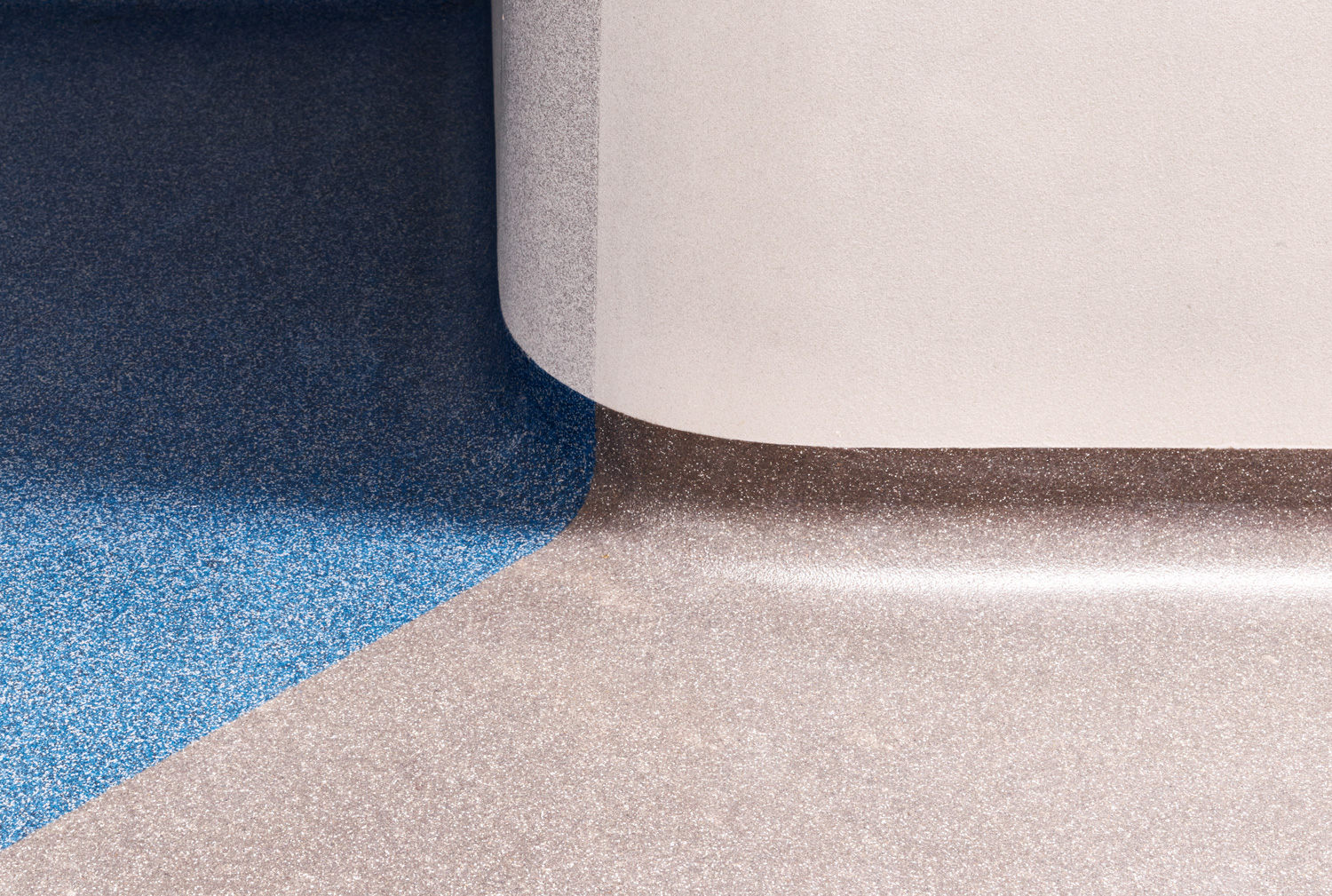

Research, testing and development of robust wall and floor finishes included an innovative trowelled resin solution (left) which creates a seamless and ‘unpickable’ finish.
Having multiple safety suites across the estate has bolstered the Trust’s system-wide resilience. Seclusion episodes are unpredictable both in terms of occurrence, as well as length of stay. From this point of view, it makes sense to provide additional capacity that can respond more safely to peak level activity. By having built the suites to the same standard across the estate, the Trust can transfer service users between facilities and proactively respond to demand as it arises. This can also help with reducing seclusion episodes taking place in inappropriate environments, such as service user bedrooms, that are not designed for the safe care of people when they are in need of being secluded.
Finally, the safety suites provide futureproofing of all mental health facilities, allowing them to be reconfigured as needed to suit different services. An assessment and treatment unit today could be transformed into a medium-secure unit tomorrow (or vice versa), without the need to change or add seclusion facilities. This ability facilitates long-term changes in the service of the organisation, allowing the Trust to respond more dynamically to population needs.
The environment is much more robust. The walls, the doors, the windows, everything has remained intact even when subjected to some quite serious attempts to do damage to them.
With regards to positive outcomes, we’ve found that there has been a significant improvement in terms of service users experience and safety.
At a time when the use of seclusion and the impact that it can have on service users is firmly in the public eye, and for good reason, it is important that we continue to look for opportunities to improve the way patients experience seclusion. We have demonstrated that a standardised approach to seclusion environments can have a positive impact for both patients and staff, and that it can provide a level of resilience to the healthcare system. We have also shown that the standardised design can be applied flexibly to different locations and site conditions, establishing a precedent for the approach to be replicated nationally. This is particularly relevant now: with modern methods of construction and design for manufacturing identified as key strategies to deliver the New Hospital Programme. We welcome the opportunity to discuss our approach with anyone who is experiencing similar challenges with their seclusion environments, and we would encourage you to reach out to us through the details on our contact page.
We advocate for a focus on individuals and not illnesses, with a shift from a treatment-based approach to proactive healthcare in a neighbourhood setting.